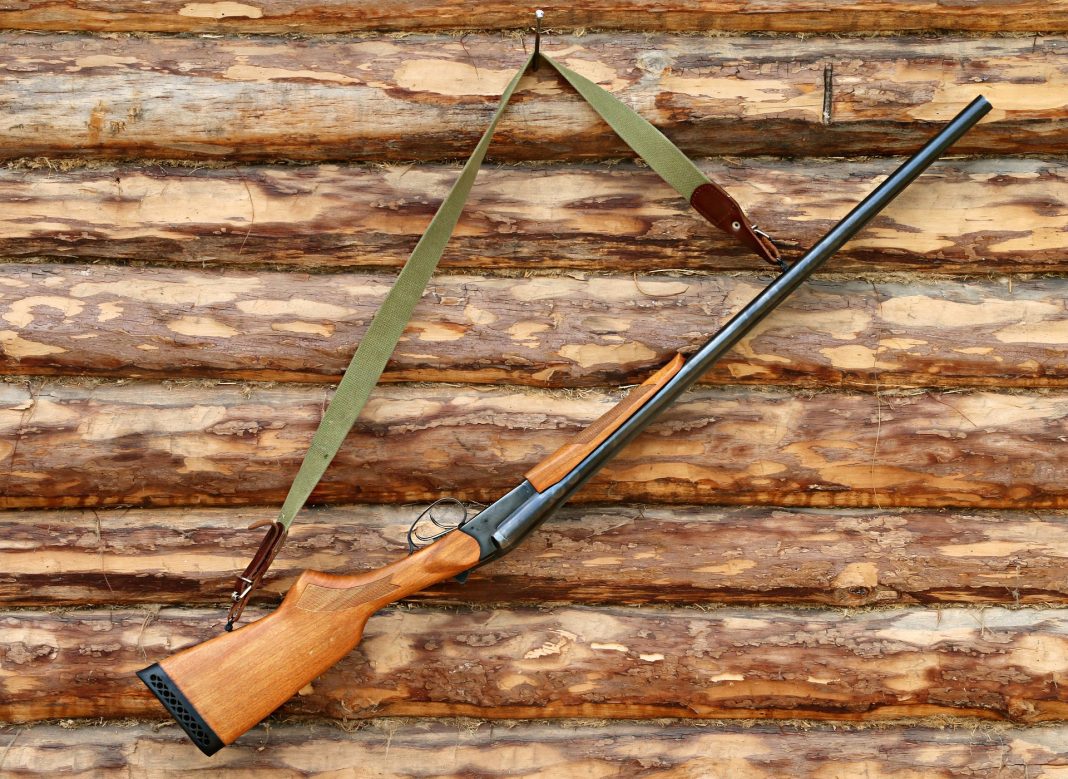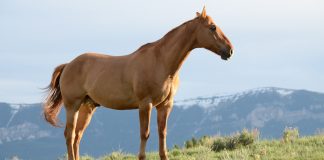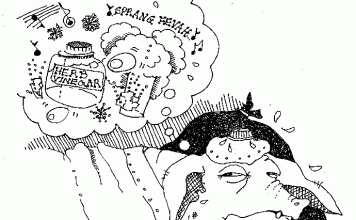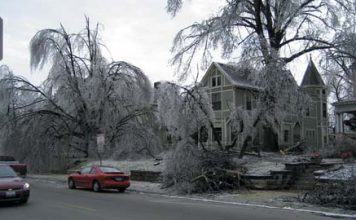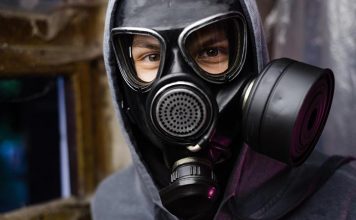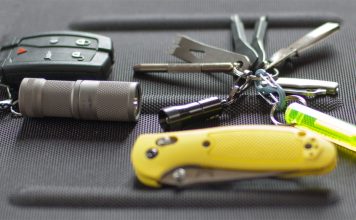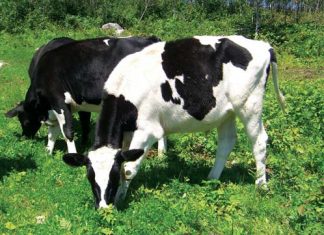 |
|
| Issue #110 • March/April, 2008 |
Robert Ruark, the great American writer of the mid-Twentieth Century, was also a big game hunter. One of his most popular books, written on the latter topic, was titled Use Enough Gun. That has proven over the decades to be really good advice.
|
That said, there are also a lot of people who use “too much gun.” One of the last century’s top authorities on guns and hunting was Jack O’Connor, a contemporary of Ruark’s. O’Connor was an advocate of medium-powered hunting rifles: the .30-06 Springfield, the 7mm Mauser (also known as 7X57mm), and the caliber he is credited with popularizing, the .270 Winchester. He well understood that a gun with excessive power for the task would also “kick” so hard that many people wouldn’t shoot well with it. He wrote in 1965 in his Complete Book of Shooting, “Men hate to admit that recoil bothers them. Again they feel that if getting belted by some hard-kicking gun bruises them and shakes them up they are lacking in masculinity. I have seen men who were so afraid of their magnum rifles that they closed their eyes, jerked the trigger, and couldn’t hit a wash tub at 100 yards. Yet they denied that they flinched and claimed that they were such stout fellas that they actually loved recoil.”
O’Connor noted that too-powerful guns were a particularly bad idea for people who didn’t have a lot of size and muscle to them: kids, for instance, and females who were not athletically built. Said O’Connor in the same book, “Not long after we were married, my wife shot my Model 54 Winchester .270once. She handed it back to me and announced that she would never shoot it again.” Mrs. O’Connor later became a noted hunter in her own right, taking big game specimens all over the world. Her favorite hunting rifle appears to have been the milder 7mm Mauser.
The trick is finding for each shooter the necessary balance of power and controllability. “Use enough gun,” indeed. But remember that using too much gun for the given task will quickly take you to the point of diminishing returns.
Rifles
Generations of young boys (and girls) have brought their first deer with the classic old .30-30 carbine. As produced in the millions by Winchester (Model ’94) and Marlin (Model 336), both are readily available with short “youth stocks.” Under seven pounds in weight, they’re less likely to physically exhaust a smaller person with a day of carrying in the woods. Recoil is not at all bad.
|
For a flat-shooting, high velocity game rifle, it’s hard to beat the .243 Winchester cartridge. With a 100 grain bullet constructed for deer-size game, and delivering a velocity in the 3000 feet per second range, the .243 has adequate power for humanely transporting Bambi from field to freezer, and has extremely mild recoil.
Noted O’Connor himself, “Today’s .243 Winchester and (analogous) 6mm Remington do very well for deer and antelope.” O’Connor wrote those words in 1965, but deer and antelope anatomy have not changed appreciably in the intervening forty-plus years.
Other mild-kicking hunting rifle calibers that have proven themselves swift and humane killers of deer-size game include the .250/3000 Savage and the .257 Roberts. However, like Mrs. O’Connor’s 7mm, they are not particularly popular today and you won’t find the wide array of good ammunition choices for them that’s available for the super-popular .243.
Though autoloaders, slide-action rifles, single shots, and even lever action rifles (such as the classic Savage Model 99 and the uber-cool Winchester Model 88) have been produced in .243 caliber, this cartridge is predominantly found in bolt action rifles. My personal choice would be one of the lighter specimens, such as Remington’s Model 7 or the ultra-light Compact variation of Ruger’s Model 77. These, along with the cost-effective and super-accurate Savage Models 110 and 11, are also available with the short “youth stocks” for smaller statured folks.
With carefully selected, perhaps handloaded ammunition, and with equally careful marksmanship and the self-discipline to wait for the perfect firing angle, the .243 can be adequate for even larger than deer-size game. Accomplished gun writer Mike Venturino had this to say in the October, 2007 Guns magazine about a young huntress named Morgan Wines: “In Morgan’s first year of hunting she bagged a pronghorn antelope buck, a whitetail buck, and not just one but two cow elk! (The second was perfectly legal. It was part of a depredation hunt in another part of the state.) That would give bragging rights to a big brawny, hairy-chested macho man, but this hunting was done by a 90 pound, 12-year-old girl wielding a Savage Model 11 Youth Model .243.”
Shotguns
Historically, the .410 shotgun has been a common “starter gun” for shooters, especially younger ones. It is the smallest and lightest “gauge” available. However, many of us think it’s too small.
|
These little shells just don’t hold enough lead to always get the job done. Personally, I see the .410 as a close-range squirrel and rabbit gun. Noted the great Frank C. Barnes in his authoritative text Cartridges of the World, the rifled slug load in the .410 is “not adequate for deer,” though he believed it would get business done with a coyote or bobcat.
On the other end of the spectrum is the 12 gauge, by far the most popular backwoods home shotgun. The reason for that popularity is its versatility: the big two and three quarter inch 12-gauge shell holds an ounce to an ounce and a quarter of lead, and that’s just in its standard loading, before you get into the Magnum options. A bigger spread of birdshot gives you a better chance of cleanly killing game birds; a bigger spread of buckshot is more devastating in the anti-personnel context; and a bigger chunk of lead (weighing 400 to 500 grains, at 1400 to 1600 feet per second) is more decisive on deer and close-range bear.
However, the 12 gauge is also infamous for its recoil with anything but a light trap or skeet load. Many a lad has been knocked on his butt firing his first 12 gauge. In an adult lifetime of teaching police, I’ve met a lot of macho man cops who were scared to death of the 12 gauge “riot gun’s” kick, and a couple of female officers who were crippled for life by it through shoulder damage sustained from the constant hammering of intensive training fire. A full load 12 gauge in a light pump gun kicks about like a .375 Magnum elephant rifle.
|
To split the difference, I think the best bet for a light-kicking but hard-hitting shotgun is the 20 gauge. You can virtually duplicate 12-gauge performance with some three-inch Magnum 20 gauge shells, but for most needs, the standard two and three-quarter inch 20 gauge shell will get the job done.
In a standard rifled slug load for deer, the 20 gauge’s projectile is approximately .62 caliber, weighs five-eighths of an ounce, and runs at a speed of 1400 foot-seconds or greater. That’s roughly the equivalent of two .44 Magnums at once. Will it transform Bambi swiftly into venison? Oh, yes.
In a buckshot load, the standard for 20 gauge is #3 buck, which consists of twenty pellets, each a quarter inch in diameter. Among common 12-gauge shells, the closest would be the so called “urban police load,” #4 buck. This consists of 27 pellets, each .23 caliber. Velocity is roughly the same, whether twelve or twenty gauge.
For home defense purposes, let’s say two evil twin men are kicking down the front door, announcing their intent to murder every man, woman, and child in the house. Spouse A fires a round of 12-gauge #4 buckshot and sends 27 .23” diameter pellets into the chest of the first evil twin. Spouse B unleashes a single round of 20 gauge #3 buckshot, blasting 20 .25″ diameter pellets at approximately the same velocity into the thorax of the second evil twin, with all the projectiles penetrating to approximately the same depth.
Who’s going to know the difference? Only the medical examiner, and then only after he meticulously counts the white spots on the X-rays, or tallies the number of pellets removed from each corpse.
|
Birdshot? Only in long range waterfowl hunting does the 20 gauge seem to really give away much to the bigger 12, and then it is largely because non-lead pellets required for lo, these many years to keep lead out of the wetlands are not very efficient penetrators. This means that with, say, steel shot, reduced momentum and reduced penetration need to be made up for with more pellets striking the bird.
For upland game such as pheasant or partridge, or for hunting small game such as wild rabbits for the family stewpot, shotgun authority Francis E. Sell proved in the 1950s that the 20 gauge loses precious little compared to the 12 gauge, and there is the three-inch Magnum 20 gauge shell available for those who want a bit more punch. Lighter and much faster to handle than most 12-bores, the 20 improves wing-shooting skill for a great many people. My significant other, a tough little critter who stands barely five feet tall, refuses to shoot my 12 gauges anymore, but is hell on wheels with her Remington 1100 Youth Model 20 gauge semiautomatic.
If the user(s) can benefit from a lighter, easier-to-carry gun that kicks less, the 20 gauge makes huge sense. In similar size shotguns, its recoil will be barely over half that of the 12 gauge. The 20 is available in all action types: semiautomatic and pump, side by side double barrel or over and under, and low-price bolt actions and single shots.
Handguns
Here, choice depends more on purpose than anything else. A hunting handgun intended for deer-size game wants to be either a large caliber such as a .44 Special or .45 Colt, or a fast-moving Magnum such as a .357, minimum. It is generally accepted that the 9mm Luger cartridge in a semi-automatic pistol or the .38 Special cartridge in a revolver is about the minimum for defense against feral human beings, while both are on the light side for humanely, ethically harvesting deer-size animals.
I’ve owned, shot, and enjoyed such monster guns as the Smith & Wesson .500 Magnum and .460, and still love to shoot my J.D. Jones custom built .375 JDJ single shot, created from a Thompson/Center pistol. About three shots from the latter will give me my monthly recoil requirement, however, and a handgun with the potency of a high-powered rifle is not something I need every day.
|
If attack by a maddened steer or an angry horse is part of the handgun’s mission profile, you do indeed want a “horse pistol,” and I’d choose a powerful sidearm with a deep-driving bullet. Not for nothing did cowboys, who risked exactly this situation every day, always prefer large caliber guns. A compact .44 Magnum revolver would serve well here, or as a daily carry gun for anyone whose homestead was in large bear country.
For the backwoods person who does not have these particular threats, and keeps a handgun for protection against feral dogs or feral humans, the 9mm or .38 Special can be adequate, and their famously light recoil makes them easy for smaller folks to shoot, or folks who are new to the gun and just a little bit intimidated by the whole thing.
Anything distinctly smallersuch as the .380 Auto pistol caliber, which is literally a “9mm Short”too often fails to make the cut. I’ve run across shooting after shooting where the defender shot a violent aggressor with a .380 and did little to immediately stop his depredations. A good hollow point load in 9mm or .38 Special will, historically, end lethal assaults more quickly.
Frankly, another good choice is the all-American .45 automatic. It has been a famous “man-stopper” in world wars and domestic gunfights alike, and with deep-penetrating 230 grain full metal jacket ammunition, can penetrate deeply enough to drop large animals. A friend of mine in Africa, game ranger Phil Honeyborne, carried a Colt .45 automatic loaded with nine rounds of “hardball” ammo because it was the best medicine he could come up with to cure surprise lion or leopard attacks when he was caught without his rifle. With proper training, little kids and the most petite females can be taught to handle the recoil of the semi-automatic .45 caliber pistol.
.22s
The .22 is the ubiquitous rural home working gun. At close range under controlled conditions (i.e., a securely tethered or closely confined animal) it can be used to begin the slaughter process on cattle and large hogs. It is when the critter breaks loose, and a perfect brain shot
|
can no longer be guaranteed, that it becomes altogether too feeble for the task. While poachers have been known to kill jacklighted deer with .22s, and the occasional desperate Inuit has been known to slay the largest of bears with a .22 bullet placed with perfect precision, no person who was both sane and gun-savvy would recommend the .22 for anything much bigger than a fox. The .22 is at its best on rabbits and squirrels, and of course, on the shooting range.
One of Savage Arms’ most popular firearms over the decades has been the Model 24. This “combination gun” was extremely handy, because its top barrel was chambered for the .22 Long Rifle cartridge and its bottom barrel for the .410 shotgun shell. However, this was a low-powered combination. The concept became much more useful when Savage started chambering the top barrel for the .30-30 Winchester rifle cartridge, and the bottom barrel for the 20 gauge shotgun shell.
The cheapest firearm to shoot with factory ammunition, with mild muzzle blast and almost non-existent recoil, the .22 is one of our “funnest” guns and, for many things, among the most useful. However, it is sadly lacking in power when any aggressive living thing of any substantial size has to be neutralized by gunfire.
The bottom line
This is why the typical rural family who’ve lived that life for a while will have a .22, and a shotgun, and a rifle chambered for a caliber powerful enough for deer-size game at a minimum. This is why when outdoor sports magazines do surveys on the hunters who read their periodicals, they learn that their average reader owns around seven firearms. It is why serious hunters own more than that: one tailors the tool to the task, and the person who hunts different kinds of game in different settings will need that many more of those tools.
If you have to choose one “deer rifle” and one shotgun, you can do very well with a .243 and a 20 gauge, and with a 9mm pistol or .38 Special revolver for personal defense, for that matter.
Someone may say to you, “Why don’t you use something more powerful?”
If that happens, it’s perfectly correct for you to smile just the least bit smugly and answer, “Everything in moderation.”


